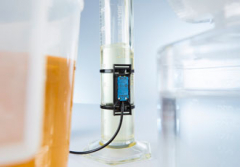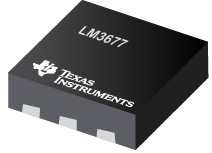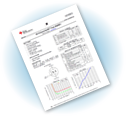Capacitive level sensor provides a non-contact solution

Compact, economic and quick to install, SICK’s CQF16 capacitive level sensor has been developed to provide a universal, non-contact solution wherever the fill level of water-based liquids must be detected in non-metallic vessels, tanks or pipes. The robust, ECOLAB-certified SICK CQF16 level sensor is supplied with a one-clip mounting bracket that can be fastened securely to the wall of any pipe or container. Using the capacitive measurement principle, it accurately detects water-based media regardless of foam, moisture or deposit build-up on the inside of the vessel.
The SICK CQF16 is a cost effective alternative to continuous analogue measurement with a diverse range of fill-level detection uses. For example, it is ideal for detecting levels of oils, milk or honey in food processing machinery, or for checking condensate water in freezers.
It will prove useful for detection of ink-cartridge levels in printing and packaging machinery. In medical and pharmaceutical machinery, it could be used to monitor levels in the storage vessels for filling vials or processing blood products.
David Hannaby, SICK’s UK Product Manager for presence detection said: “The CQF offers an economical new alternative for a wide range of level sensing duties. Wherever there is a requirement for on/off or low/high switching, for example, the CQF offers all the reliability and flexibility you would expect from a SICK device.
“For most applications, the factory-calibrated version is all you need to get started. Just clip the sensor into the bracket supplied and you are ready to go. For more demanding applications, the sensor can be simply taught-in via the cable connection. Easy commissioning is assured thanks to the two on-device LEDs showing power-on and output status.”
The compact CQF16 measures just 16x34x8mm and has a sensing range up to 6mm. With a robust housing rated up to IP69K, and the option of M8 male connector or integral cable connection, the rugged CQF16 level sensors avoid the risk of fluid penetration in process environments. With a 100mA signal, the sensors offer a flexible choice of PNP/NPN or NO/NC switching outputs.
Similar articles
More from SICK (UK) LTD
- SICK’s deep learning brings simplicity to AI inspection 13th October 2020
- Capacitive level sensor provides a non-contact solution 25th September 2020
- SICK switches up its cylindrical inductive safety offering 19th May 2020
- Conquering new frontiers with world’s smallest safety laser scanner 8th January 2020












Write a comment
No comments